To what extent is designing for health and wellness within the remit of the built environment? Here’s what Kylie Buhagiar and Alicia McKimm of GOLDEN think.

July 29th, 2021
If the topic of wellbeing didn’t feature prominently enough in design discussions pre-2020, it definitely does now. The pandemic has amplified issues of mental and physical health across all sectors and, for designers, the emphasis on creating spaces that support and facilitate wellness has increased dramatically.
It’s been interesting to see residential environments transformed into ‘multi-use settings’ as people were forced to work from home, often not venturing out because of tough restrictions. And now as many people head back to the office and public domain, we have a renewed responsibility to ensure they’re comfortable and secure.

GOLDEN’s experience in residential design contributes to the studio’s unique perspective of designing for health and wellness. Photo: Sharyn Cairns
The very least we can offer these people, whether employees, customers or patrons, are sanitation stations and at GOLDEN, we’ve had many clients request them recently. However, as a practice, we can’t help but feel that such insertions will be temporary and as time goes by, demand will wane. So what changes will stick? And what design shifts have occurred to better support end users’ wellbeing in a post-pandemic world?
Health officials have been quick to highlight the importance of adequate ventilation in shared spaces and this should implore architects and designers to further explore the role of biophilic design in facilitating positive physical and psychological impacts within workplace, retail and hospitality interiors.

Designing for health and wellness manifests in GOLDEN’s retail environments, such as Viktoria & Woods’ Doncaster boutique, through materiality and a pared back palette. Photo: Nicole England
The benefits of human-nature interaction have been widely recognised, with spaces that feature connections with nature, incorporate nature’s patterns and include natural elements, improving people’s general wellbeing. Achieving all of these outcomes in the one space may not always be possible but integrating even one in a fit out’s overall scheme can be advantageous.
Of course, biophilic design is just one slice of the whole and there are many more parts involved in creating spaces that can heal, calm and nurture. Interiors have to be immersive if they’re to make people feel good and to this end, creating a sensory experience must be prioritised. It’s something we’ve always focused on as a practice and COVID-19 has simply brought it to the forefront, generating greater awareness around the evocative qualities of a space and a design’s direct influence on the end user.

The best workplace, retail and hospitality spaces really are experiential, and they celebrate the small moments. Architects and designers are charged with ensuring an interior respects both function and aesthetic and, in order to make people feel comfortable, they need to utilise clever planning, emphasise strong circulation, feature clear sightlines, incorporate hard- working materials, integrate smart storage solutions, focus on the lighting details and harness technology where relevant.
There’s no one-size-fits-all application and each space must be tailored to the client’s brief to reflect a distinct identity, which will make the experience that much more memorable.

At GOLDEN, we have a reductionist approach to designing interiors and begin each new project with what we’ve coined the ‘big idea’ and then work our way down to the details, as opposed to doing it the other way around. Being well versed in creating wellness spaces, such as nail salons, pilates studios and skin treatment boutiques, has made us understand the importance of remaining flexible and paying close attention to the client’s brief.
We always talk about how spaces shouldn’t feel over-designed and how crucial it is for the end user to be able to walk into a space and not be hit with multiple design elements. Instead, everything should feel perfectly balanced and seamless in its expression and it’s imperative that any elements that aren’t adding value to a space be removed. Yes, we believe in beauty and understand a fit out must look good, but if something doesn’t have a greater purpose then it has no reason to be there. Everything we do is first and foremost embedded in function.

This focus on functionality will be heightened in a post-pandemic world, where effectiveness and efficiency are key to making sure operations run smoothly. The 1.5-metre rule for social distancing has to be implemented, for example, so we have to be clever in the way we maximise patron numbers, making it feasible for the business, while still adhering to government guidelines. It’s not always going to be an easy task, but necessity is indeed the mother of invention.
Issues of wellness should also be considered alongside the idea of community as now, more than ever, they feed into each other. A sense of connectivity is pertinent and how this is facilitated must have a level of nuance to it that didn’t exist prior to social distancing.

As a practice, we begin by creating a personal space for each individual within the public space and once that’s established, we create areas for mingling. This lends itself to a positive atmosphere because everyone is individually accommodated and therefore comfortable, which promotes incidental interaction.
It’s important that shared spaces be broken up into smaller nooks to allow for more intimate conversation, while also allowing people to still feel like part of a whole. Our responsibility as architects and designers may be a big one. But the best work we’ll ever do, the work that will stand the test of time, is the design of spaces that ultimately make people feel good.

INDESIGN is on instagram
Follow @indesignlive
A searchable and comprehensive guide for specifying leading products and their suppliers
Keep up to date with the latest and greatest from our industry BFF's!
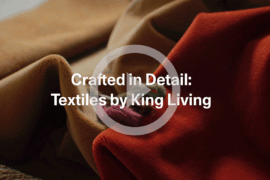
For a closer look behind the creative process, watch this video interview with Sebastian Nash, where he explores the making of King Living’s textile range – from fibre choices to design intent.

For those who appreciate form as much as function, Gaggenau’s latest induction innovation delivers sculpted precision and effortless flexibility, disappearing seamlessly into the surface when not in use.
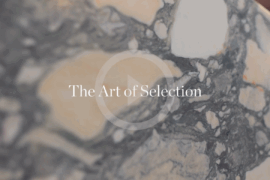
CDK Stone’s Natasha Stengos takes us through its Alexandria Selection Centre, where stone choice becomes a sensory experience – from curated spaces, crafted details and a colour-organised selection floor.

Merging two hotel identities in one landmark development, Hotel Indigo and Holiday Inn Little Collins capture the spirit of Melbourne through Buchan’s narrative-driven design – elevated by GROHE’s signature craftsmanship.
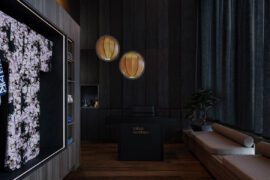
Making a splash on the hair spa scene, the latest project from X + O makes a little slice of Japan right at home in suburban Melbourne.
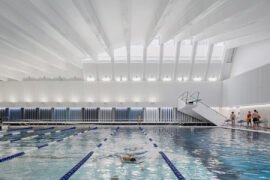
Hiwa, the University of Auckland’s six-storey recreation centre by Warren and Mahoney with MJMA Toronto and Haumi, has taken out Sport Architecture at the 2025 World Architecture Festival. A vertical village for wellbeing and connection, the project continues its run of global accolades as a new benchmark for campus life and student experience.
The internet never sleeps! Here's the stuff you might have missed
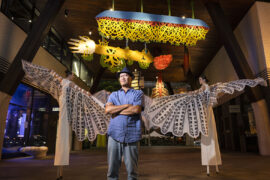
Unveiled at Barangaroo South, Indonesian–Australian artist Jumaadi’s first permanent public artwork layers sculpture, sound and shadow to reimagine how art is encountered in the city.
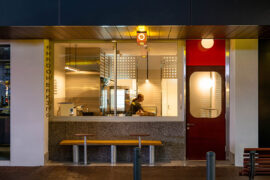
Working within a narrow, linear tenancy, Sans Arc has reconfigured the traditional circulation pathway, giving customers a front row seat to the theatre of Shadow Baking.